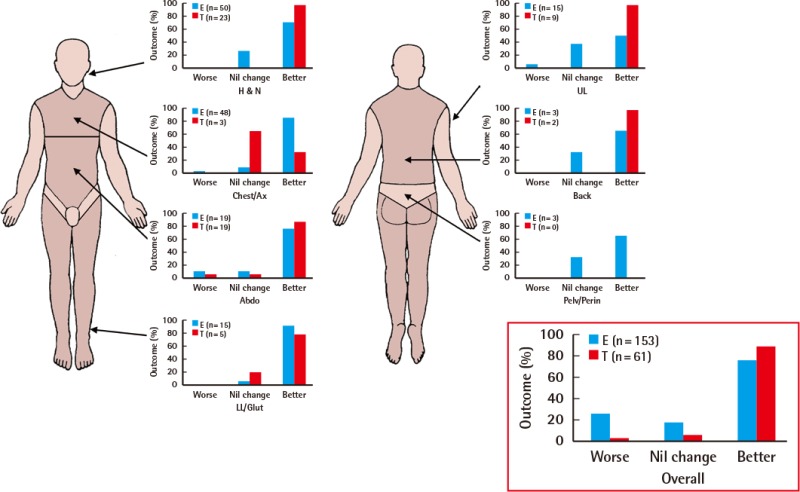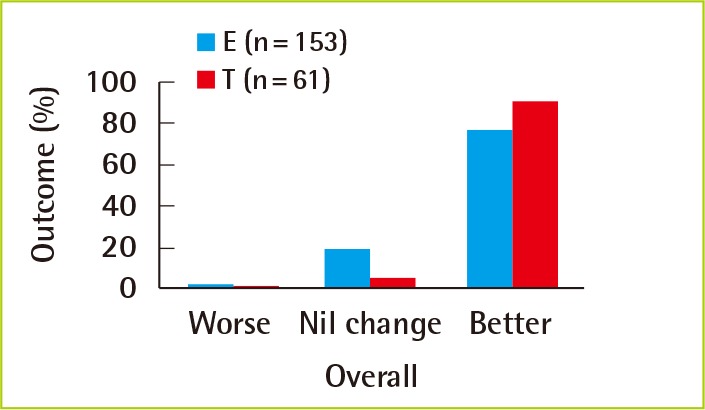This erratum is being published to correct the printing errors on page 730, 732, and 733.
1. In page 730, 16th line of the 'RESULTS', the value (24.45%) should have been (24.64%).
Before correction
When stratified by sex, females (85.52%) were more likely than males (75.36%) to report better satisfaction outcomes, hence males (24.45%) were more likely to report worse or no change in outcome vs. females (14.48%) (P<0.05) (Table 2).
After correction
When stratified by sex, females (85.52%) were more likely than males (75.36%) to report better satisfaction outcomes, hence males (24.64%) were more likely to report worse or no change in outcome vs. females (14.48%) (P<0.05) (Table 2).
2. In page 732, the last line of right column, (Table 2) should have been '(Table 3)'.
Before correction
Pathogenesis sub-analysis by sex indicated that females (83.96%) who sustained scars in the elective setting were more likely to report better outcomes than males (63.83%) (P<0.01), hence males (36.17%) were more likely to report no change or worse outcomes versus females (16.04%) (P<0.01) (Table 2).
After correction
Pathogenesis sub-analysis by sex indicated that females (83.96%) who sustained scars in the elective setting were more likely to report better outcomes than males (63.83%) (P<0.01), hence males (36.17%) were more likely to report no change or worse outcomes versus females (16.04%) (P<0.01) (Table 3).
3. In page 732, the last (bottom right) graph of (Fig. 3) representing 'Overall' should have been as following one. The overall worse scar revision outcomes in elective setting should indicate 2.61% as described in the figure legend.
4. In page 733, 3rd line of the left column, (Table 2) should have been '(Table 3)'.
Before correction
Furthermore, in the elective setting males (29.79%) were more likely than females (15.09%) to report no change in outcome (P=0.03) (Table 2).
After correction
Furthermore, in the elective setting males (29.79%) were more likely than females (15.09%) to report no change in outcome (P=0.03) (Table 3).
5. In page 733, 4th line of the left column, (Table 2) should have been '(Table 3)'.
Before correction
No inter-sex differences were demonstrated in the traumatic setting (Table 2).
After correction
No inter-sex differences were demonstrated in the traumatic setting (Table 3).





